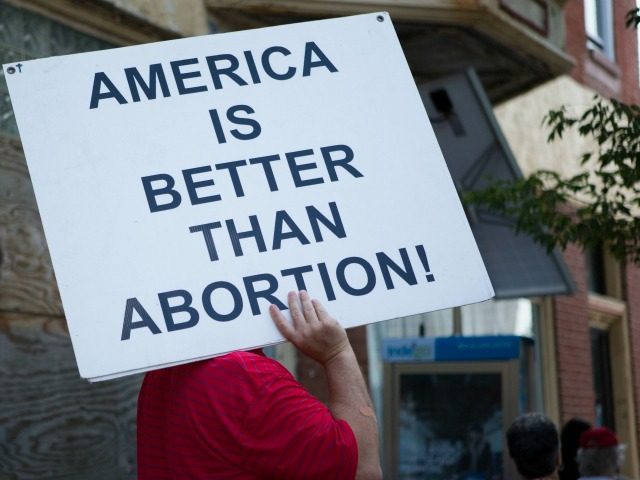What a difference an election makes.
Last summer the Supreme Court struck down Texas’s laws that applied health and safety standards to abortion clinics. This was a disappointment for the pro-life movement, which works to protect both the baby and the mother.
A half-year later, energized activists and legislators are preparing a host of new pro-life bills and optimism is high for a more life-friendly judiciary.
What a difference, indeed.
Only a few months ago, not only had the Supreme Court’s swing vote, Justice Anthony Kennedy, swung against women’s health and safety and in favor of abortionists’ shoddy practices, but the specter of Hillary Clinton was looming large. It was a very real possibility that the late Justice Antonin Scalia would be replaced by a pro-abortion nominee from a pro-abortion administration.
Then November 8 happened. Americans voted for a future that includes unborn babies. And nowhere was this more evident than in the election of state legislators.
Often overlooked by political pundits, state legislatures – where government is closer to the people – have become significantly more pro-life over the last four election cycles. The result has been a dramatic increase in laws designed to protect both women and unborn babies; an increase that now looks to continue into 2017.
That’s because last November, at the state level, the party with the strongest pro-life platform in history, the Republicans, defeated the party with the most pro-abortion platform in history, the Democrats. Now, obviously, not all Republican politicians are pro-life and not all Democrats are pro-abortion. But as has been widely noted, “pro-choice” Republican office holders are almost an endangered species and pro-life Democrats are practically extinct.
The current streak of Republican state legislative control began with the 2010 elections. Prior to then, 55 percent of all state legislators were Democrats and 44 percent were Republicans. Democrats controlled both houses of the legislative branch in 27 states, Republicans only 14.
By 2016, the tables had turned – 56 percent of state lawmakers were from the GOP, 43 percent were Democrats. And in 30 states, Republicans had majorities in both houses of the legislature.
Given the cyclical nature of elections, one would have thought that after six years of gains and with such overwhelming majorities Republicans would have lost ground in the states last November. But the opposite occurred.
According to Governing magazine, as of 2017, there are now more Republican state legislators than at any time since 1920. And Democrats have their lowest number of “trifecta” states, where one party controls both houses of the legislature and the governorship, since the Civil War – when there were 15 fewer states.
The march of state pro-life legislation, then, should advance.
States that have led the way in promoting and protecting life will doubtless be considering new bills in the coming months. States such as Iowa and Kentucky, where voters defeated longtime obstructionist pro-abortion politicians, should for the first time in many years be able to enact pro-life laws.
A measure that states will likely examine is one to protect unborn babies from dismemberment. Currently, most babies aborted during the second trimester of pregnancy are torn limb from limb – literally. Arms are ripped off, legs are severed, and heads are decapitated. In some of these cases, the baby can feel the horrendous pain of being dismembered before bleeding to death. A half-dozen states have moved to stop this barbaric practice. Expect more to do so.
And speaking of pain, more states may pass the Pain-Capable Unborn Child Protection Act. This measure protects babies from abortion who are at least 20 weeks along – the age by which there is a strong consensus of evidence that they can feel the agony of being tortured in the womb. Ohio recently became the 15th state to enact such a law. Again, expect more to follow.
Then there’s the question of public funding for the nation’s billion-dollar abortion company, Planned Parenthood. Almost half of the states have attempted to limit or stop taxpayer dollars from flowing to the organization that terminates 325,000 lives a year. Some have been stopped by a pro-abortion reading of federal regulations. The incoming Trump administration may alter this interpretation of federal rules. Expect more states to end what amounts to corporate welfare for the country’s richest child-killing business.
Extending pre-abortion waiting periods, having aborted babies’ remains treated with dignity, and stopping the trade in aborted children’s body parts are additional measures that states will consider in 2017.
Without question, the pro-life movement suffered a momentary court setback in 2016. But what appeared to be a stumbling block now looks like a bump in the road.
To borrow a phrase, you could say that for unborn babies, their families, and pro-lifers, last year’s election has indeed brought new “hope and change.”
Fr. Frank Pavone is National Director of Priests for Life

COMMENTS
Please let us know if you're having issues with commenting.